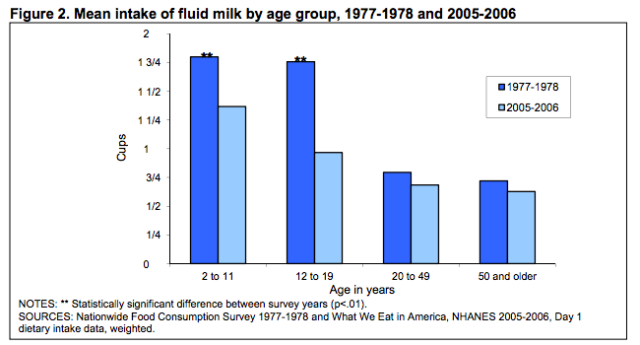
Europe forecasts lower growth rate for Ireland in 2014
February 25, 2014
For Europe’s Economy, A Ray Of Light
February 26, 2014On Feb. 24, the iconic “Got Milk?” tagline was laid to rest. Since 1993, the US Milk Processor Education Program, a marketing board made up of milk processors and monitored by the US Department of Agriculture, has used the slogan to promote drinking cow’s milk. In the past decade, the print version of the ads have featured an eclectic cast of celebrities—Taylor Swift, Steven Tyler, and even Dr. Phil. Now, it’s switching from the nostalgic phrase to a jazzier “Milk Life” campaign that focuses on the dairy product as a source of protein—and by extension, energy and strength.
In 2006, the group ran a spin-off campaign called “Body By Milk” that highlighted its nutritional benefits. The New York Times reported that the $20 million worth of ads it purchased represented one-third of the total advertising budget of the year. But critics said it came across as too dry and educational. The latest attempt is many things, but dry isn’t one of them. In the first set of advertisements as part of the $50 million “Milk Life” campaign, milk drinkers are literally propelled by streams of liquid dairy (which is a little weird.)
“Got Milk” ads originally focused on milk for milk’s sake—a delicious, refreshing beverage that you craved after a mouthful of peanut butter. They were simple and iconic, and served to remind America that everyone loved milk, pop stars included. But in reality, the US is buying and drinking less and less milk (pdf)—as are we all—and the industry is trying a new tactic to fight the tide. It’s hard to say whether the decline would have been faster had the “Got Milk” ads not run—but the drop in milk consumption while they’ve been used is very significant.
The US Department of Agriculture has been tracking the decline:

According to a 2013 report by the US Department of Agriculture (pdf), fluid milk consumption has been dropping since the 1930s, with a particular drop-off after the ’70s. Between 1977 and 2007, the portion of adolescents and adults who didn’t drink any milk in a given day rose from 41% to 54%. And the share that drank milk three or more times a day dropped to 4% from 13%. Drinking milk just isn’t as frequent as it used to be:

And when Americans drink milk has changed, too. In 1977, around half of preadolescent children and a quarter of adolescents/adults drank milk at lunch. In 2007, that had dropped to 29% and 8%, respectively. Similar drops were seen in dinner consumption. For awhile, advertisements were targeted to curb the increasing marginalization of milk as a breakfast beverage (or worse, cereal accessory) by plugging it as a great pre-bed drink.
Meanwhile, sales of lactose-free dairy products have gone up in both Europe and the US, suggesting that increasing lactose-intolerance could be a factor. Shifting demographics mean a greater percentage of the US population is at-risk for decreased dairy digestion than was the case in the early 20th century. And non-dairy milk substitute sales have surged as well. Soy milk has seen a slight decline, but almond milk seems to still be picking up steam. More and more Americans are limiting their consumption of animal products. Maybe milk advocates should focus on winning back all those vegans before it’s too late.


